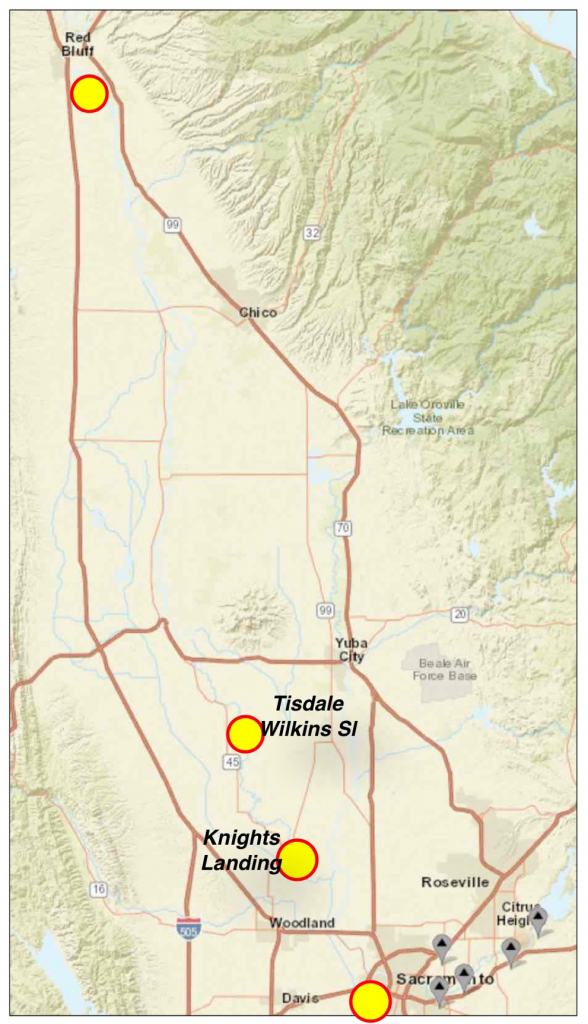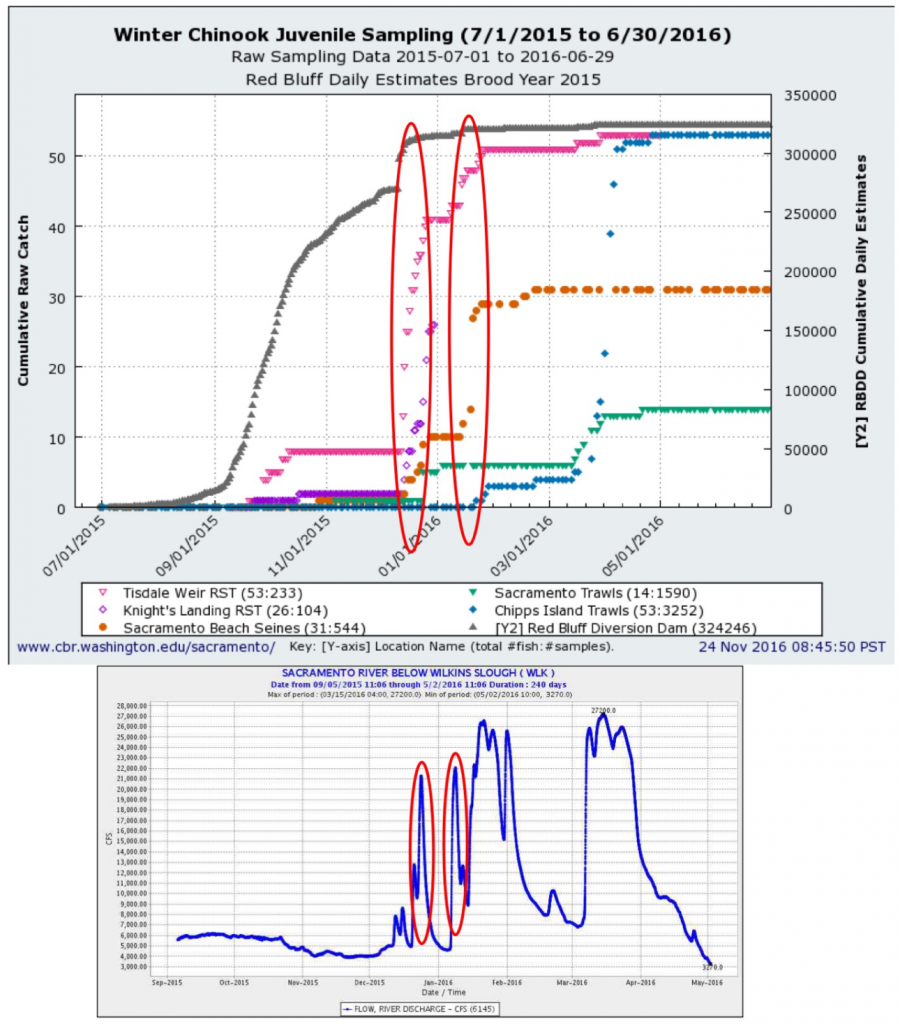In a recent post I discussed the importance of the first fall rains in stimulating the emigration of juvenile winter-run Chinook salmon from the Redding/RedBluff spawning and rearing area of the Sacramento River below Shasta Dam.
Juvenile salmon trap and seine data from fall and early winter of 2015 and 2016 further support the importance of these first-of-season rains to the emigration of winter-run salmon emigration to the Delta, Bay, and ocean. The pertinent data were obtained from trap and seine collections from four locations (Red Bluff, Tisdale-Wilkins, Knights Landing, and Sacramento) shown in Figure 1.
This year’s (2016) fall migration pattern (Figure 2) shows the marked uptick in movement (catch) with the late October storms. Movement had begun gradually in early September from Red Bluff to Tisdale Weir, with some fish showing up at Sacramento. Most of the fish located above Sacramento seemed to take advantage of the storm-water surge, since the plots for the cumulative capture of juvenile salmon at the Red Bluff, Tisdale Weir, and Knights Landing locations flattened off after the storms.
The previous year’s (2015) migration pattern (Figure 3) indicates that the fish waited until the first storms at the end of fall and beginning of winter before moving from the river into the Delta at Sacramento. The March movements indicated in Sacramento and Chipps Island (entrance to SF Bay) trawl catches are indicative of February-March stocking of hatchery smolts near Redding – these larger smolts are not readily detected in river screw traps and seines.
A recent study report1 describes how low flows result in “long in-river residence and low survival whereas strong peak flows corresponded to rapid emigration and high survival… Overall, this study highlights the importance of pulsed flow conditions for promoting higher survival of juvenile Winter-Run Chinook Salmon emigrating to the ocean.” The study notes that survival is proportional to the cumulative catch. Note that the catch in 2016 is nearly 50% higher so far than it was in 2015.
The recent data confirms the need to bypass some of the inflow to Central Valley rim dams during early storm pulses. This bypass of flow to spawning and rearing areas just downstream of the dams gets salmon moving downstream. It is equally important to limit Delta exports during these peak juvenile emigration periods. Success during storm events is critical for endangered salmon to reach the Bay and ocean.

Figure 1. Location of four trap and seine locations in Sacramento River between Red Bluff (river mile 243) and Sacramento (river-mile 54).

Figure 2. Winter-run Chinook salmon cumulative catch at Sacramento River collection sites in fall 2016 (www.cbr.washington.edu/sacramento), plus river flow at Wilkins Slough gage (CDEC data).

Figure 3. Winter-run Chinook salmon cumulative catch at Sacramento River collection sites in fall-winter 2015 (www.cbr.washington.edu/sacramento), plus river flow at Wilkins Slough gage (CDEC data)
- http://scienceconf2016.deltacouncil.ca.gov/sites/default/files/2016-11-02-Accepted-Poster-Abstracts.pdf. Emigration Rate and Survival of Winter-run Chinook Salmon. Jason Hassrick, ICF International, jason.hassrick@icfi.com. Arnold Ammann, NOAA Southwest Fisheries Science Center, arnold.ammann@noaa.gov. p. 64. ↩
